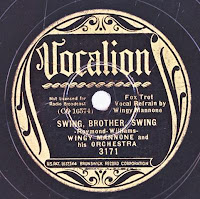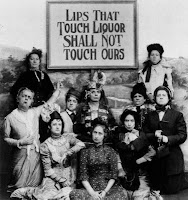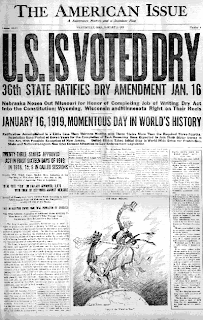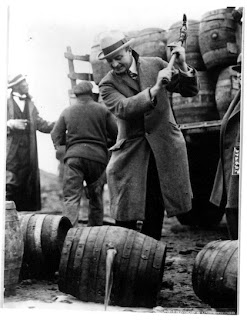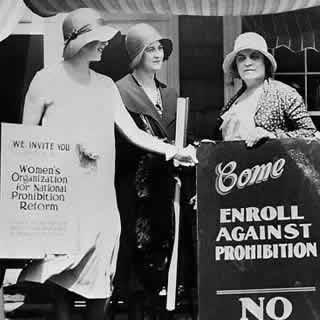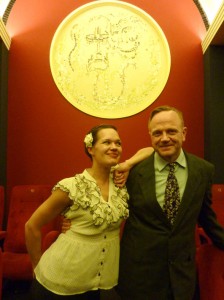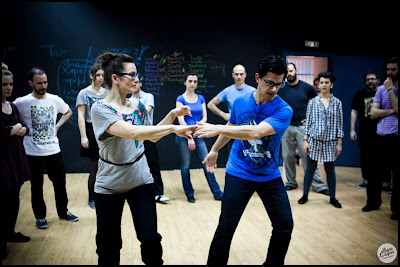 |
| big apple night club |
The dance that eventually became known as the Big Apple is speculated to have been created in the early 1930s by African American youth dancing at the Big Apple Club, which was at the former House of Peace Synagogue on Park Street in Columbia, South Carolina. The synagogue was converted into a black juke joint called the "Big Apple Night Club.”
In 1936, three white students from the University of South Carolina – Billy Spivey, Donald Davis, and Harold "Goo-Goo" Wiles – heard the music coming from the juke joint as they were driving by.Even though it was very usual for whites to go into a black club, the three asked the club's owner, Frank "Fat Sam" Boyd, if they could enter. Skip Davis, the son of Donald Davis, said that "Fat Sam" made two conditions: They had to pay twenty five cents each and they had to sit in the balcony. During the next few months, the white students brought more friends to the night club to watch the black dancers. The white students became so fascinated with the dance that, in order to prevent the music from stopping, they would toss coins down to the black dancers below them when the dancers ran out of money. "We had a lot of nickels with us because it took a nickel to play a song. If the music stopped and the people on the floor didn't have any money, we didn't get any more dancing. We had to feed the Nickelodeon", recalls Harold E. Ross, who often visited the club and was 18 years old at the time.
The white dancers eventually called the dance the black dancers did the "Big Apple", after the night club where they first saw it.Ross commented that "We always did the best we could to imitate the steps we saw. But we called it the Little Apple. We didn't feel like we should copy the Big Apple, so we called it that."
Rise in popularity (1937-1938)
During the summer of 1937, the students from the University of South Carolina started dancing the Big Apple at the Pavilion in Myrtle Beach.Betty Wood (née Henderson), a dancer who helped revive the Big Apple in the 1990s, first saw the dance there, and six months later she won a dance contest and become nicknamed "Big Apple Betty." The news of the new dance craze spread to New York, and a New York talent agent, Gay Foster, traveled to the Carolinas to audition dancers for a show at the Roxy Theater, the world's second-largest theater at that time. Eight couples were chosen for the show, including Wood, Spivey, and Davis, to perform the Big Apple during a three-week engagement that began on September 3, 1937.They performed six shows a day to sold-out audiences and greatly contributed to the dance's popularity. After the engagement at the Roxy, the group became known as "Billy Spivey's Big Apple Dancers" and toured the country for six months.
Arthur Murray, a dance instructor and entrepreneur, had two dance studios in New York in 1936. After seeing the Big Apple dancers at the Roxy in September 1937, Murray incorporated the Big Apple into his swing dance syllabus. Due to the popularity of the Big Apple and other popular dances such as the Conga, Murray started to offer franchises in 1937. By 1938, there were franchises in several major cities, including Detroit, Cleveland, Atlanta, and Minneapolis. The company continued to grow to over 200 Arthur Murray dance studios throughout the world by 2003 [on the Life Magazine photo above Arthur Murray can be seen on a chair at the back calling out the formations]. This is a link to a video on YouTube with the short film The Big Apple with the Arthur Murray "Shag" Dancers where you can see how the original Big Apple probably looked like. Dance arrangement and direction by Arthur Murray himself! It's very interesting and rare and hope nobody removes it. Unfortunately, for some reason I cannot post it in here.
 |
| frankie manning in the middle |
In the fall of 1937, four couples from Whitey's Lindy Hoppers, a Lindy Hop performance group based at the Savoy Ballroom in Harlem, New York, traveled to Hollywood, California, to perform a Lindy Hop sequence for a Judy Garland movie called Everybody Sings. Soon after arriving in California, Herbert "Whitey" White, the manager for the group, sent a telegram to Frankie Manning, the lead dancer for the group, about the new dance craze in New York City called the Big Apple. Manning had never seen the dance before but based on the description of the dance in the telegram, he choreographed a Big Apple routine for the group. Since the dance was based on combining jazz steps that the Lindy hoppers were already familiar with, such as Truckin', the Suzie-Q, and Boogies, the group quickly learned the new steps. They performed their Big Apple routine for Everybody Sing, but the dance scene was eventually cut due to a dispute between the director and Whitey over the dance group's not receiving a break in the filming schedule.
This is "John's Idea":
And here's Count Basie & his Orchestra performing "One O'Clock Jump" live for the 1943 film Reveille with Beverly.
When the group returned to Harlem, Manning taught his Big Apple version to other dancers in Whitey's Lindy Hoppers, before ever having seen the version done by the Big Apple dancers at the Roxy. Whitey's Lindy Hoppers would dance the Big Apple mixed with Lindy Hop at the Savoy Ballroom until interest in the dance died out.
Later in 1939, the group performed a Big Apple sequence for the movie Keep Punching,which has been recreated by Lindy hop performance groups since the 1990s.
[Check out my post entitled "Tranky Doo" for a video from The Spirit Moves documentary that includes the Big Apple routine].
The song heard on Keep Punching was re-recorded by The Solomon Douglas Swingtet and is called "Big Apple Contest". You can find it in their album Swingmatism from 2006.
By the end of 1937, the Big Apple had become a national dance craze. On December 20, 1937, Life featured the Big Apple in a four-page photo spread and the magazine predicted that 1937 would be remembered as the year of the Big Apple.
The moves of the Big Apple are frequently used in Lindy Hop. This is also used as a warm up before Lindy Hop classes. Note that the moves are very 8-count centered, like tap dance. That is, they almost all start on count 8.
Here's a clip from Judy Pritchett's documentary Dancing the Big Apple 1937: African Americans Inspire a National Craze which explores the Big Apple dance in the context of American history:
Sources:
1. The text in black comes from Wikipedia: Big Apple (dance)
2. The text in red comes from Frankie Manning - Ambassador of Lindy Hop by F. Manning & C.R. Millman.3. The photo of the Big Apple night club I found here: barnesrarte360.blogspot.com
4. The photo of white youth dancing as well as the Arthur Murray photo and the Life Magazine article photo I found here:http://collegiateshag.com/photos.html
5. The photo with Frankie Manning I found in several places on the internet.
6. The last photo with the title "Lesson 4" I found in pixelnaiad's photostream and it's most probably a spread from one of Arthur Murray's dance instruction manuals.































